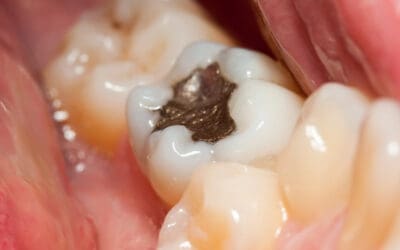Are you trying to decide between dental sealants vs fillings for your oral health needs? Dental sealants are a preventive measure that helps protect teeth from decay, while fillings are used to restore teeth that have already been damaged by cavities. Understanding the differences between these two options can help you make an informed decision about your dental care.
Dental Sealants vs Fillings
Understanding dental sealants is crucial when considering the dental sealants vs fillings debate. Dental sealants are a preventive measure used to protect teeth from decay. They are typically applied to the chewing surfaces of the back teeth, where decay occurs most often. The sealant acts as a barrier, shielding the enamel from plaque and acids. This protective layer is especially beneficial for children and teenagers, who are more prone to cavities. However, adults can also benefit from sealants if their teeth have deep grooves or depressions.
In the context of dental sealants vs fillings, it’s important to note that sealants are different from fillings, which are used to restore teeth that have already been damaged by decay. While sealants are preventive, fillings are corrective. If you’re curious about the financial aspect of dental treatments, you might find it helpful to explore Understanding Fillings Dental Cost: What to Expect. This can provide insight into the potential costs associated with restorative dental procedures. Understanding the differences between these two options can help individuals make informed decisions about their oral health care.
Understanding Dental Fillings
Dental fillings are a common solution for restoring the function and integrity of teeth that have been compromised by decay or damage. Unlike dental sealants, which are primarily used as a preventive measure, fillings are employed to repair existing cavities. The process involves removing the decayed portion of the tooth and filling the area with a material that can withstand the forces of chewing. This not only helps restore the tooth’s original shape but also prevents further decay by sealing off spaces where bacteria can enter.
When considering dental sealants vs fillings, it’s important to understand that fillings are typically used when there is already a cavity present. They play a crucial role in maintaining oral health by addressing issues that have already developed. For those seeking more information on this topic, you can explore more about Quality Dental Fillings in Arlington to gain a deeper understanding of how fillings can benefit your dental health.
Benefits of Dental Sealants
When considering dental sealants vs fillings, it’s important to understand the unique benefits that dental sealants offer. Dental sealants act as a protective barrier, effectively shielding the grooves and depressions on the chewing surfaces of teeth from plaque and food particles. This preventive measure can be particularly beneficial in maintaining oral health by reducing the risk of cavities, especially in children and teenagers who may struggle with thorough brushing. Unlike fillings, which are used to restore teeth after decay has occurred, dental sealants are applied to healthy teeth to prevent decay from developing in the first place. This proactive approach can contribute to long-term dental health and potentially reduce the need for more invasive dental procedures in the future.
Benefits of Dental Fillings
Dental fillings are a common solution for restoring the function and integrity of teeth affected by decay or damage. One of the primary benefits of dental fillings is their ability to effectively seal off spaces where bacteria can enter, thus preventing further decay. They also help restore the natural shape and function of the tooth, allowing for normal chewing and speaking. Additionally, modern dental fillings can be made to match the color of your natural teeth, providing a more aesthetically pleasing result. When considering dental sealants vs fillings, it’s important to understand how each option can address specific dental needs. For more information, you can visit Lighthouse Dental, your trusted Arlington Dentist.
Application Process Overview
When considering dental sealants vs fillings, understanding the application process for each can provide clarity on their distinct roles in oral health. Dental sealants are typically applied as a thin, protective coating on the chewing surfaces of the back teeth, creating a barrier against decay. This process is generally quick and painless, involving the cleaning and drying of the tooth before the sealant is painted on and hardened with a special light. On the other hand, fillings are used to restore a tooth that has already been affected by decay. The process involves removing the decayed portion of the tooth, cleaning the area, and then filling it with a material that restores the tooth’s shape and function. Both procedures aim to protect teeth, but they differ significantly in their application and purpose.
Longevity and Durability Comparison
When considering dental sealants vs fillings, understanding their longevity and durability is crucial. Dental sealants are typically applied as a preventive measure, forming a protective layer over the teeth to guard against decay. They are generally more effective in the short term, lasting several years before needing reapplication. On the other hand, fillings are used to restore teeth that have already experienced decay. They are designed to be more durable, often lasting a decade or more, depending on the material used and oral hygiene practices. Both options serve distinct purposes in dental care, with their longevity and durability playing a significant role in their effectiveness.
Cost Considerations
When evaluating dental sealants vs fillings, cost considerations play a significant role in decision-making. Generally, dental sealants are more affordable than fillings, as they are a preventive measure applied to protect teeth from decay. Fillings, on the other hand, are used to repair teeth that have already been affected by cavities, which can make them more expensive due to the complexity of the procedure. The cost can also vary based on factors such as the material used and the location of the dental practice. Understanding the financial implications of dental sealants vs fillings can help individuals make informed choices about their oral health care.
Ideal Candidates for Each
When considering dental sealants vs fillings, it’s important to understand who might benefit most from each option. Dental sealants are typically ideal for children and teenagers who are at a higher risk of developing cavities, as they provide a protective barrier over the chewing surfaces of the back teeth. On the other hand, fillings are generally suited for individuals who already have cavities that need to be treated. Adults who have experienced tooth decay may find that fillings are necessary to restore the function and integrity of their teeth. Understanding the differences between dental sealants and fillings can help individuals make informed decisions about their oral health needs.
Common Misconceptions
When considering dental sealants vs fillings, it’s important to address some common misconceptions that often arise. One prevalent misunderstanding is that dental sealants and fillings serve the same purpose. While both are used in dental care, they have distinct roles; sealants are typically applied as a preventive measure to protect teeth from decay, whereas fillings are used to restore teeth that have already been affected by cavities. Another misconception is that dental sealants are only for children, when in fact, they can be beneficial for adults as well. Additionally, some people believe that once a tooth is sealed or filled, it requires no further care, which is not the case. Regular dental check-ups and proper oral hygiene are essential to maintain the effectiveness of both treatments. Understanding these differences can help individuals make informed decisions about their oral health.
Conclusion
In the debate of dental sealants vs fillings, understanding your options is key; for more information, call 703-337-3994 or read reviews on Google Maps.






